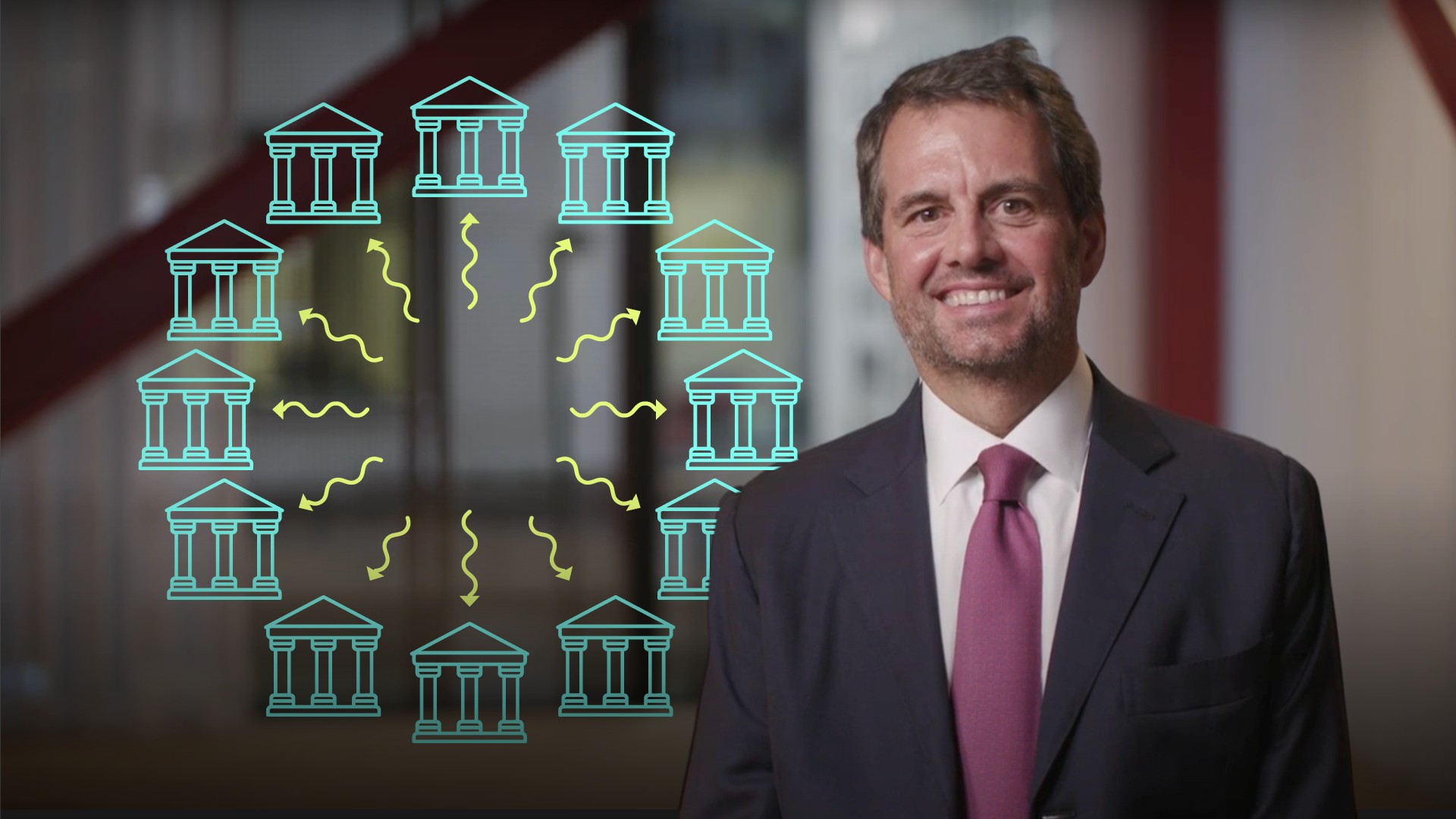
QE and Other Unconventional Monetary Policy Tools

Tim Hall
30 years: Debt capital markets
In this series, Tim will cover the recent history of unconventional monetary policy, specifically quantitative easing in four of the world’s major economies: The United States, the United Kingdom, the Eurozone and Japan. In this video, Tim provides an introduction to Quantitative Easing.
In this series, Tim will cover the recent history of unconventional monetary policy, specifically quantitative easing in four of the world’s major economies: The United States, the United Kingdom, the Eurozone and Japan. In this video, Tim provides an introduction to Quantitative Easing.
Subscribe to watch
Access this and all of the content on our platform by signing up for a 7-day free trial.

QE and Other Unconventional Monetary Policy Tools
7 mins 46 secs
Key learning objectives:
Outline the benefits of QE
Learn when QE was introduced in the Eurozone and Japan
Understand why some countries were reluctant to adopt QE
Identify needs to be considered when using QE
Overview:
The Fed and the BOE appear to have been the most successful so far in terms of the effectiveness of their QE. The ECB has been only modestly successful, and The Bank of Japan, although the longest modern user of QE, has been the least effective. In 2018, the UK, US, Eurozone, and Japan accounted for nearly 50% - around $42 trillion - of the world’s $85.8 trillion of GDP.
Subscribe to watch
Access this and all of the content on our platform by signing up for a 7-day free trial.
Where did QE come from?
The catalyst for turning to QE can be traced to the Great Recession of 2007-2009.
What were the benefits of QE as a policy response?
- QE injected much-needed liquidity into the financial markets during the darkest days of the recession
- Drove down long-term borrowing rates
- Stimulated bank lending to the real economy, so as to jumpstart growth
Why was the Eurozone reluctant to launch QE?
- Several countries - including Germany - were not in favour of QE because they believed that buying sovereign bonds of Eurozone countries was not part of the ECB mandate
- The Eurozone was also forced to address an indigenous issue in terms of a peripheral Eurozone sovereign crisis, which prolonged economic stress in the European monetary bloc until 2012
When was QE announced in the Eurozone?
- Finally in March 2015, the Eurozone member states agreed to permit the ECB to launch a QE programme, which continued until the end of 2018
- In September 2019, the ECB announced a series of further accommodative measures to revive a Eurozone economy in which inflation had fallen to 1%, including a second round of open-ended QE that would start in November 2019
What other unconventional policy tools did the ECB use?
- Intermediate-term collateralised bank lending
- Select purchases of EU government bonds in which the purchases were sterilised, in order to improve liquidity in the banking system and encourage lending
When did the Bank of Japan first use QE?
Its first round of QE started in 2001, and was an effort to jump-start Japan’s shrinking economy. Since then, it has unleashed three separate QE programmes. However, it has arguably been the least successful central bank of all.
When using QE, what are some important aspects to consider?
- Timing of the intervention
- Asset categories targeted
- Method of implementing QE
- Other simultaneous policy incentives
What are the requirements for effective QE?
- Accommodative fiscal policies
- Bank reforms
- Bank recapitalisations
Why is a coordinated policy response essential to revive an economy?
- In cases where a comprehensive and coordinated response had been unleashed, QE has been a key component in a cocktail of policy tools that have been used to revive bank lending as a pre-condition of financing economic growth
- In cases where fiscal policies and/or economic reforms have not simultaneously been utilised alongside accommodative monetary policy, the results have been much less successful
Subscribe to watch
Access this and all of the content on our platform by signing up for a 7-day free trial.

Tim Hall
There are no available Videos from "Tim Hall"



























